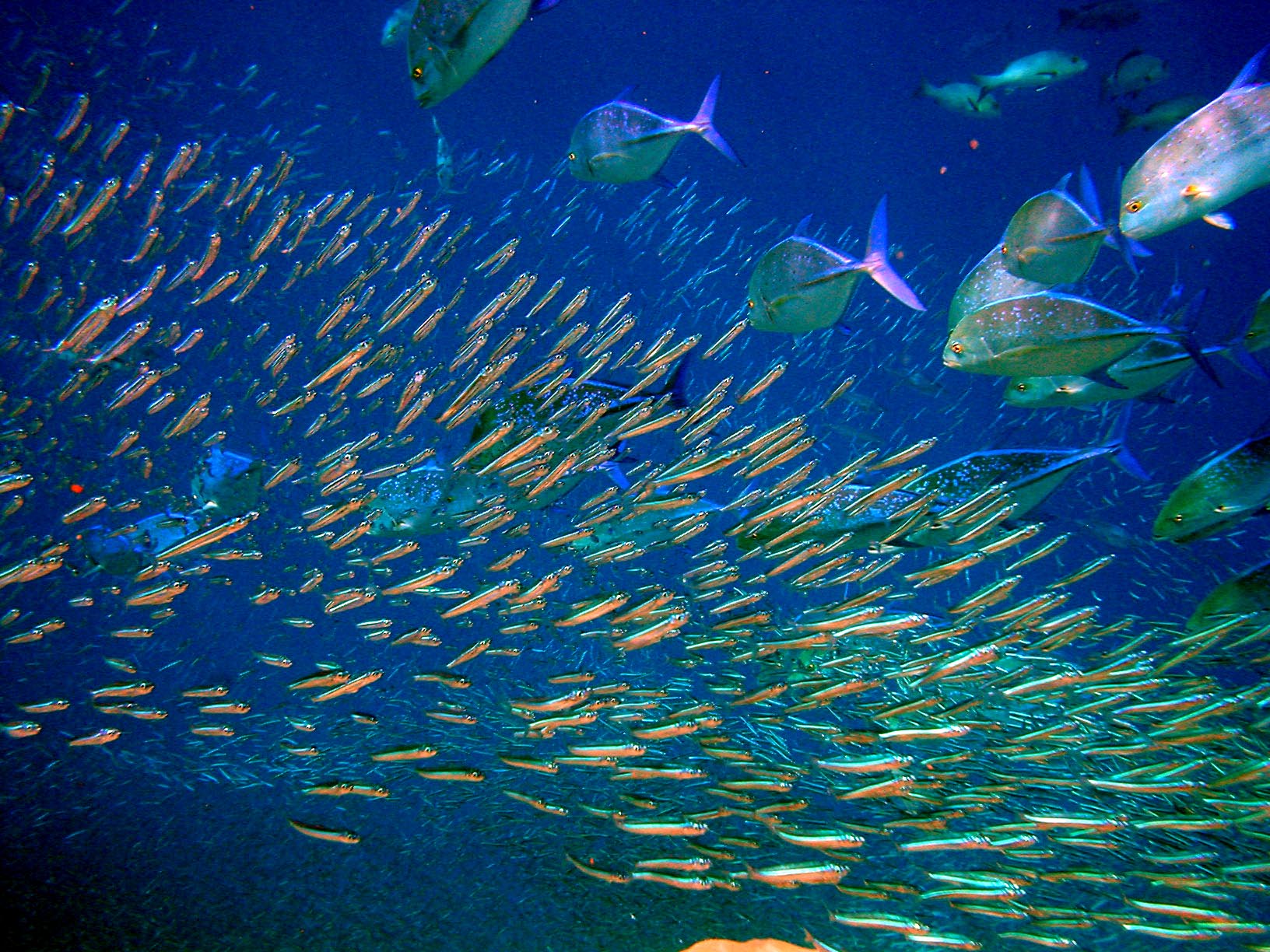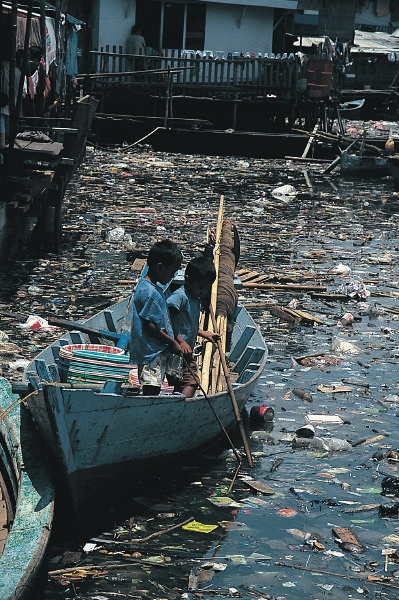|
Fish Mortality
Fish mortality is a parameter used in fisheries population dynamics to account for the loss of fish in a fish stock through death. The mortality can be divided into two types: * Natural mortality: the removal of fish from the stock due to causes not associated with fishing. Such causes can include disease, competition, cannibalism, old age, predation, pollution or any other natural factor that causes the death of fish. In fisheries models natural mortality is denoted by (M).Sparre, P.; Ursin E.and Venema S. C. (1989). Introduction to tropical fish stock assessment. Part 1- Manual. FAO Fisheries Technical Paper No. 3061. Rome, FAO. p. 337. * Fishing mortality: the removal of fish from the stock due to fishing activities using any fishing gear. It is denoted by (F) in fisheries models. (M) and (F) are additive instantaneous rates that sum up to (Z), the instantaneous total mortality coefficient; that is, Z=M+F.Gulland, J.A. (1969). Manual of Methods for fish stock assessment. Part ... [...More Info...] [...Related Items...] OR: [Wikipedia] [Google] [Baidu] |
Population Dynamics Of Fisheries
A fishery is an area with an associated fish or aquatic population which is harvested for its commercial or recreational value. Fisheries can be wild or farmed. Population dynamics describes the ways in which a given population grows and shrinks over time, as controlled by birth, death, and migration. It is the basis for understanding changing fishery patterns and issues such as habitat destruction, predation and optimal harvesting rates. The population dynamics of fisheries is used by fisheries scientists to determine sustainable yields. The basic accounting relation for population dynamics is the BIDE (Birth, Immigration, Death, Emigration) model, shown as: : ''N''1 = ''N''0 + ''B'' − ''D'' + ''I'' − ''E'' where ''N''1 is the number of individuals at time 1, ''N''0 is the number of individuals at time 0, ''B'' is the number of individuals born, ''D'' the number that died, ''I'' the number that immigrated, and ''E'' the number that emigrated between time 0 a ... [...More Info...] [...Related Items...] OR: [Wikipedia] [Google] [Baidu] |
Fish Stocks
Fish stocks are population, subpopulations of a particular species of fish, for which intrinsic parameters (growth, recruitment, mortality and fishing mortality) are traditionally regarded as the significant factors determining the Population dynamics of fisheries, stock's population dynamics, while extrinsic factors (immigration and emigration) are traditionally ignored. Stocks fished within biologically sustainable levels decreased from 90% in 1974 to 62.3% in 2021. Concepts The stock concept All species have geographic limits to their distribution, which are determined by their Physiological tolerance, tolerance to natural environment, environmental conditions, and their ability to competition, compete successfully with other species. In ocean, marine environments this may be less evident than on land because there are fewer topography, topographical boundaries, however, discontinuities still exist, produced for example by mesoscale and sub-mesoscale circulations that m ... [...More Info...] [...Related Items...] OR: [Wikipedia] [Google] [Baidu] |
Predator
Predation is a biological interaction in which one organism, the predator, kills and eats another organism, its prey. It is one of a family of common List of feeding behaviours, feeding behaviours that includes parasitism and micropredation (which usually do not kill the Host (biology), host) and parasitoidism (which always does, eventually). It is distinct from Scavenger, scavenging on dead prey, though many predators also scavenge; it overlaps with Herbivore, herbivory, as Seed predation, seed predators and destructive frugivores are predators. Predation behavior varies significantly depending on the organism. Many predators, especially carnivores, have evolved distinct hunting strategy, hunting strategies. Pursuit predation involves the active search for and pursuit of prey, whilst ambush predation, ambush predators instead wait for prey to present an opportunity for capture, and often use stealth or aggressive mimicry. Other predators are opportunism, opportunistic or om ... [...More Info...] [...Related Items...] OR: [Wikipedia] [Google] [Baidu] |
Marine Pollution
Marine pollution occurs when substances used or spread by humans, such as industrial waste, industrial, agricultural pollution, agricultural, and municipal solid waste, residential waste; particle (ecology), particles; noise; excess carbon dioxide; or invasive organisms enter the ocean and cause harmful effects there. The majority of this waste (80%) comes from land-based activity, although Marine Transportation, marine transportation significantly contributes as well. It is a combination of chemicals and trash, most of which comes from land sources and is washed or blown into the ocean. This pollution results in damage to the Natural environment, environment, to the health of all organisms, and to economic structures worldwide. Since most inputs come from land, via rivers, sewage, or the atmosphere, it means that Continental shelf, continental shelves are more vulnerable to pollution. Air pollution is also a contributing factor, as it carries iron, carbonic acid, nitrogen, silico ... [...More Info...] [...Related Items...] OR: [Wikipedia] [Google] [Baidu] |
Fishing
Fishing is the activity of trying to catch fish. Fish are often caught as wildlife from the natural environment (Freshwater ecosystem, freshwater or Marine ecosystem, marine), but may also be caught from Fish stocking, stocked Body of water, bodies of water such as Fish pond, ponds, canals, park wetlands and reservoirs. Fishing techniques include trawling, Longline fishing, longlining, jigging, Fishing techniques#Hand-gathering, hand-gathering, Spearfishing, spearing, Fishing net, netting, angling, Bowfishing, shooting and Fish trap, trapping, as well as Destructive fishing practices, more destructive and often Illegal, unreported and unregulated fishing, illegal techniques such as Electrofishing, electrocution, Blast fishing, blasting and Cyanide fishing, poisoning. The term fishing broadly includes catching aquatic animals other than fish, such as crustaceans (shrimp/lobsters/crabs), shellfish, cephalopods (octopus/squid) and echinoderms (starfish/sea urchins). The term is n ... [...More Info...] [...Related Items...] OR: [Wikipedia] [Google] [Baidu] |
Resource Management
In organizational studies, resource management is the efficient and effective development of an organization's resources when they are needed. Such resources may include the financial resources, inventory, human skills, production resources, or information technology (IT) and natural resources. In the realm of project management, processes, techniques and philosophies as to the best approach for allocating resources have been developed. These include discussions on functional vs. cross-functional resource allocation as well as processes espoused by organizations like the Project Management Institute (PMI) through their Project Management Body of Knowledge (PMBOK) methodology of project management. Resource management is a key element to activity resource estimating and project human resource management. Both are essential components of a comprehensive project management plan to execute and monitor a project successfully. As is the case with the larger discipline of project mana ... [...More Info...] [...Related Items...] OR: [Wikipedia] [Google] [Baidu] |
Bioeconomics (fisheries)
Bioeconomics may refer to: * Bioeconomics (fisheries), the study of the dynamics of living resources using economic models * Bioeconomics (biophysical), the study of economic systems applying the laws of thermodynamics * Biological economics, the study of the relationship between human biology and economics * Bioeconomics, the social theory of Nicholas Georgescu-Roegen {{disambiguation ... [...More Info...] [...Related Items...] OR: [Wikipedia] [Google] [Baidu] |
Mortality Rate
Mortality rate, or death rate, is a measure of the number of deaths (in general, or due to a specific cause) in a particular Statistical population, population, scaled to the size of that population, per unit of time. Mortality rate is typically expressed in units of deaths per 1,000 individuals per year; thus, a mortality rate of 9.5 (out of 1,000) in a population of 1,000 would mean 9.5 deaths per year in that entire population, or 0.95% out of the total. It is distinct from "morbidity", which is either the prevalence or Incidence (epidemiology), incidence of a disease, and also from the incidence rate (the number of newly appearing cases of the disease per unit of time). An important specific mortality rate measure is the crude death rate, which looks at mortality from all causes in a given time interval for a given population. , for instance, the Central Intelligence Agency, CIA estimates that the crude death rate globally will be 7.7 deaths per 1,000 people in a population p ... [...More Info...] [...Related Items...] OR: [Wikipedia] [Google] [Baidu] |
Fish Kill
The term fish kill, known also as fish die-off, refers to a localized mass mortality event, mass die-off of fish populations which may also be associated with more generalized mortality of aquatic life.University of Florida. Gainesville, FL (2005)"Fish kill." ''Plant Management in Florida's Waters.'' The most common cause is reduced oxygen in the water, which in turn may be due to factors such as drought, harmful algal bloom, overpopulation (biology), overpopulation, or a sustained increase in water temperature. Fish diseases and parasites, Infectious diseases and parasites can also lead to fish kill. Toxicity is a real but far less common cause of fish kill, and is often associated with man-made water pollution. Fish kills are often the first visible signs of environmental stress and are usually investigated as a matter of urgency by environmental agencies to determine the cause of the kill. Many fish species have a relatively low tolerance of variations in environmental conditi ... [...More Info...] [...Related Items...] OR: [Wikipedia] [Google] [Baidu] |



